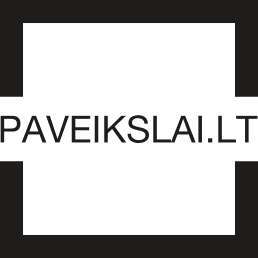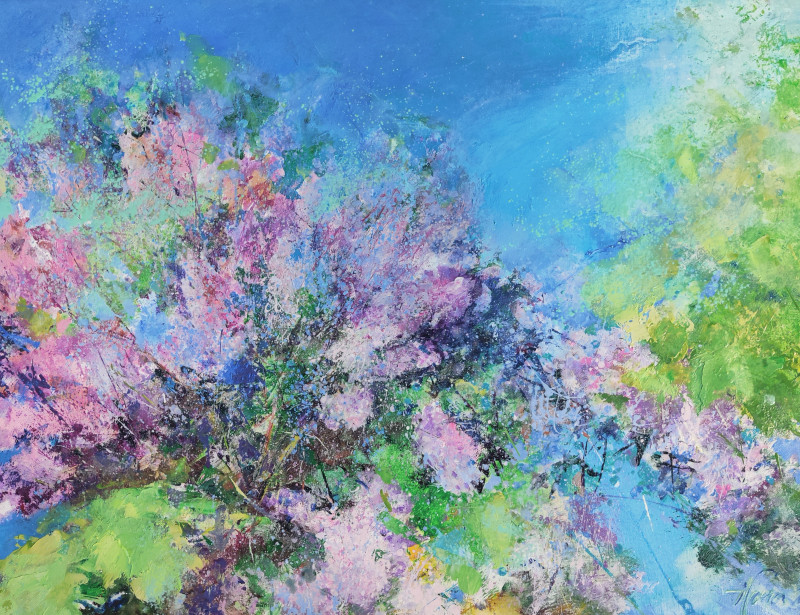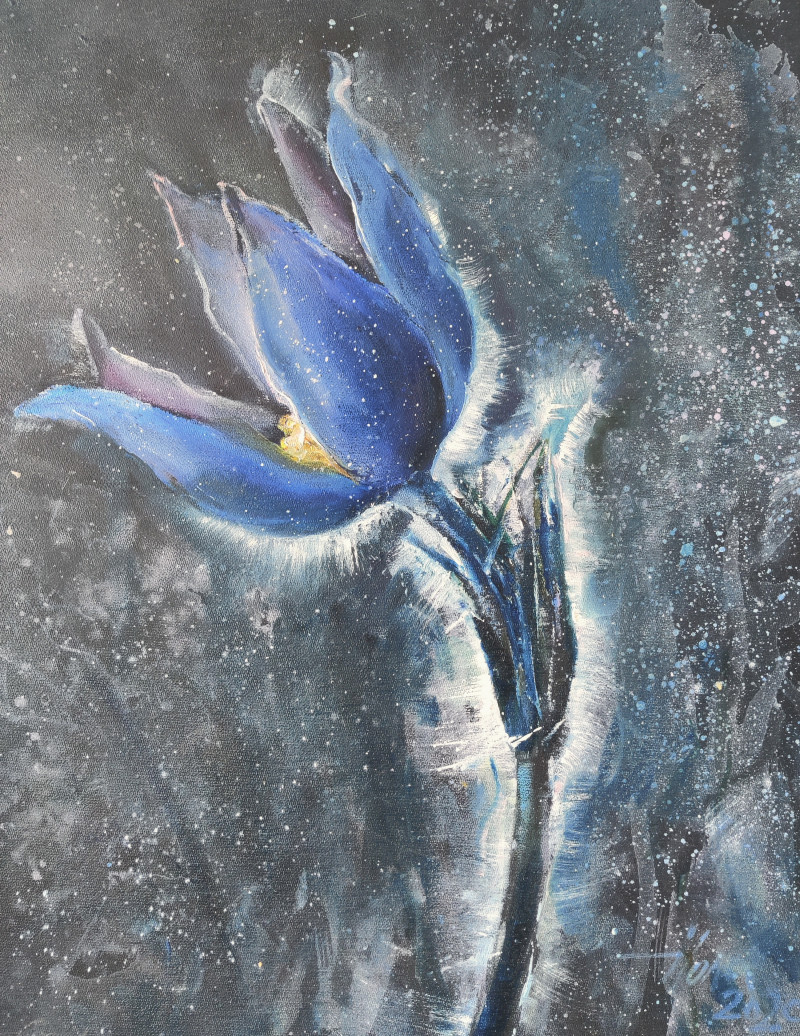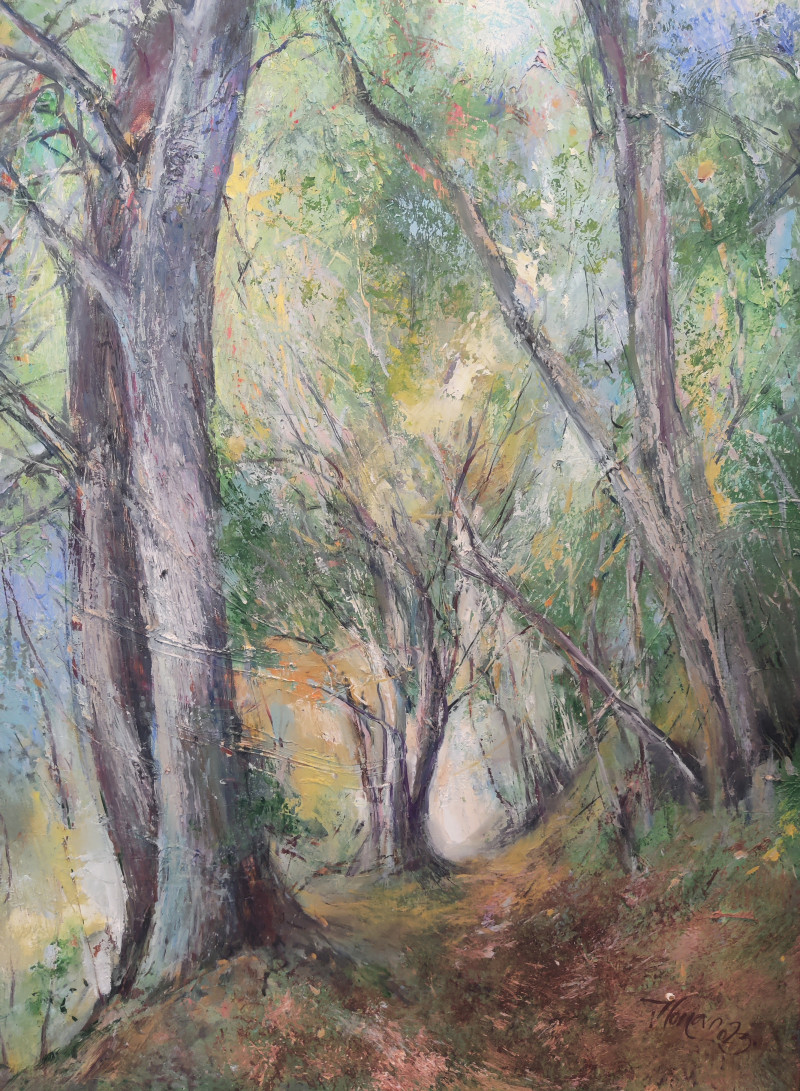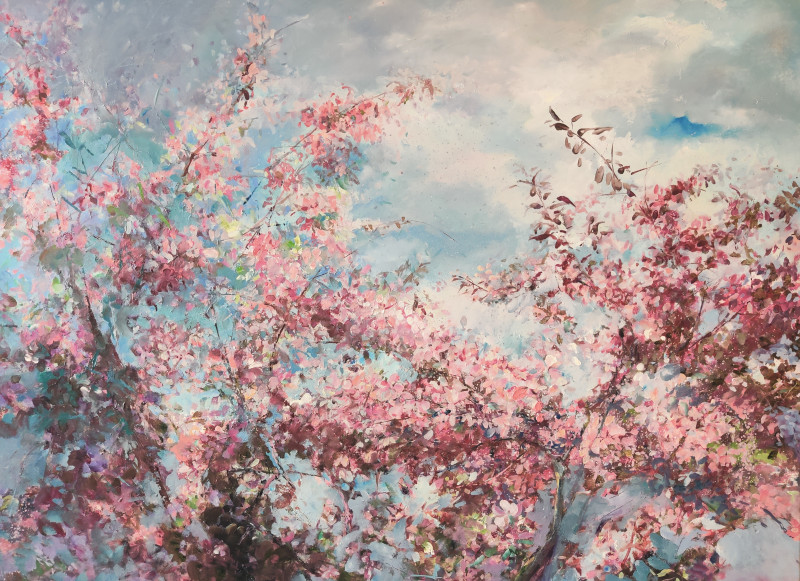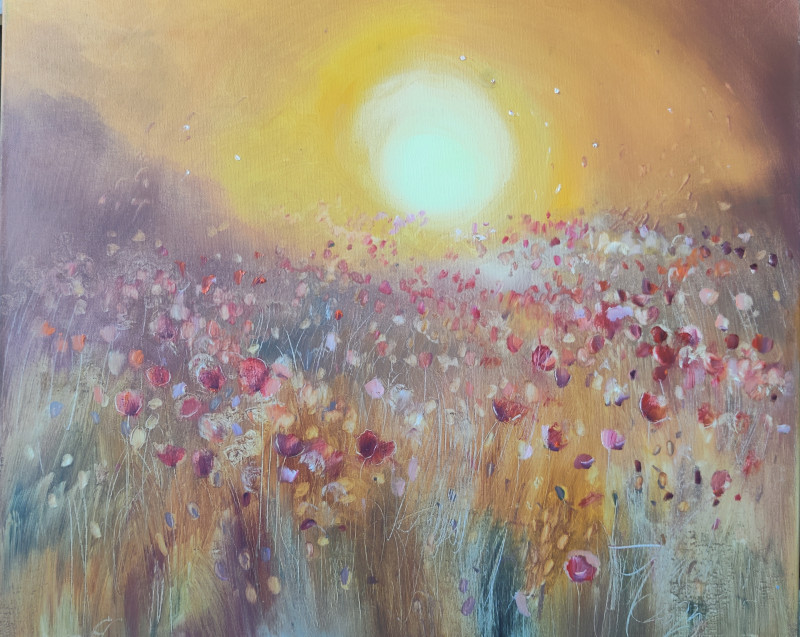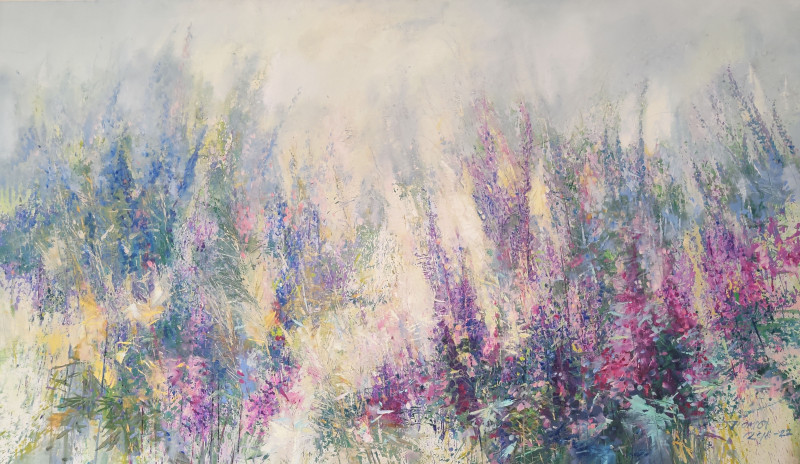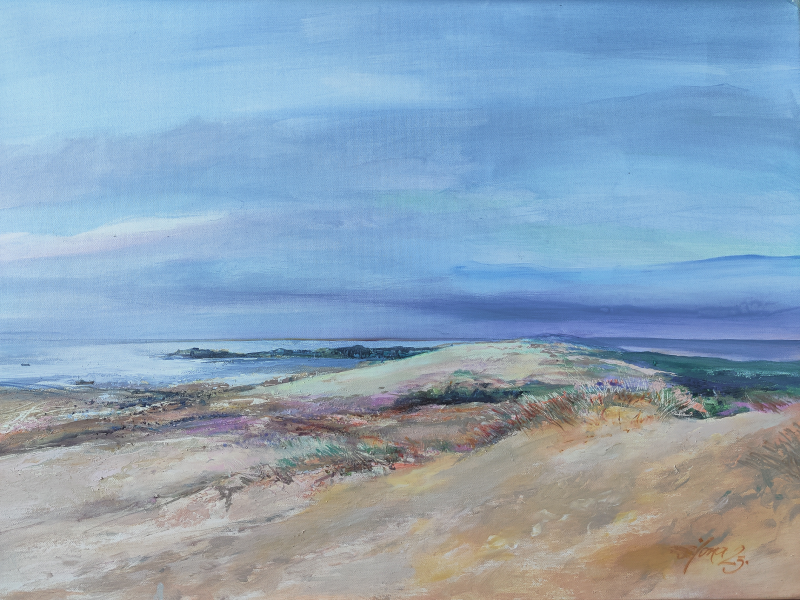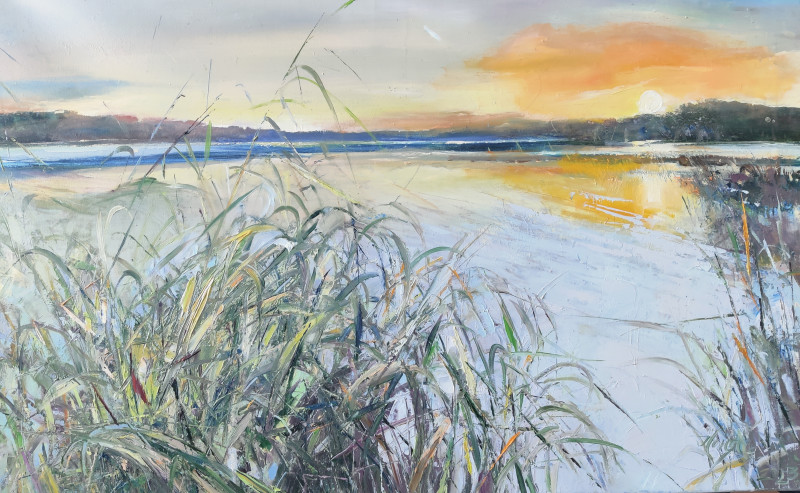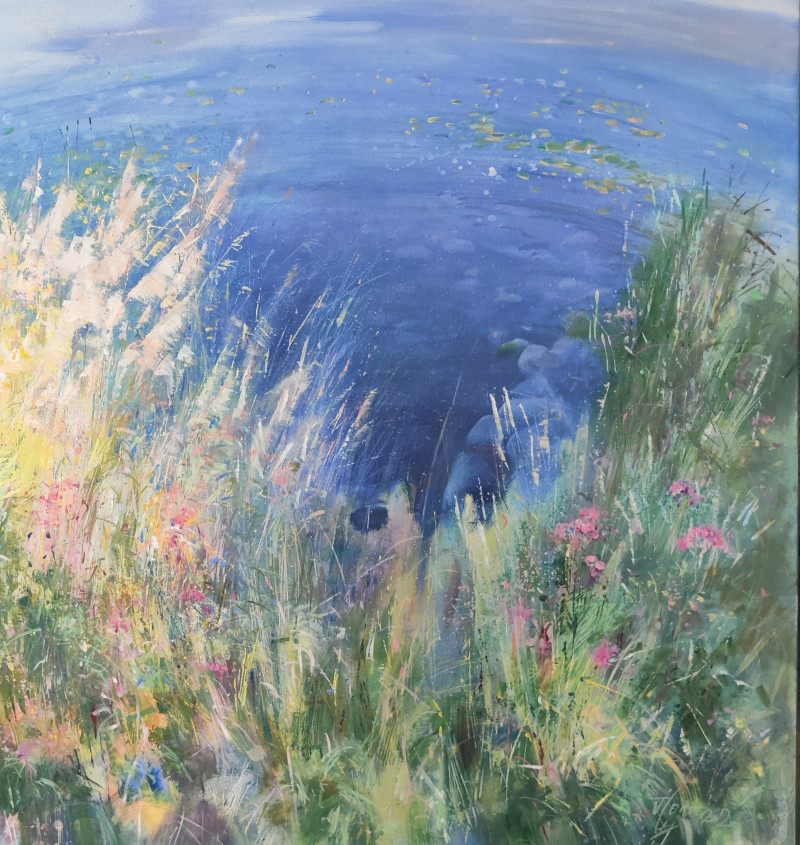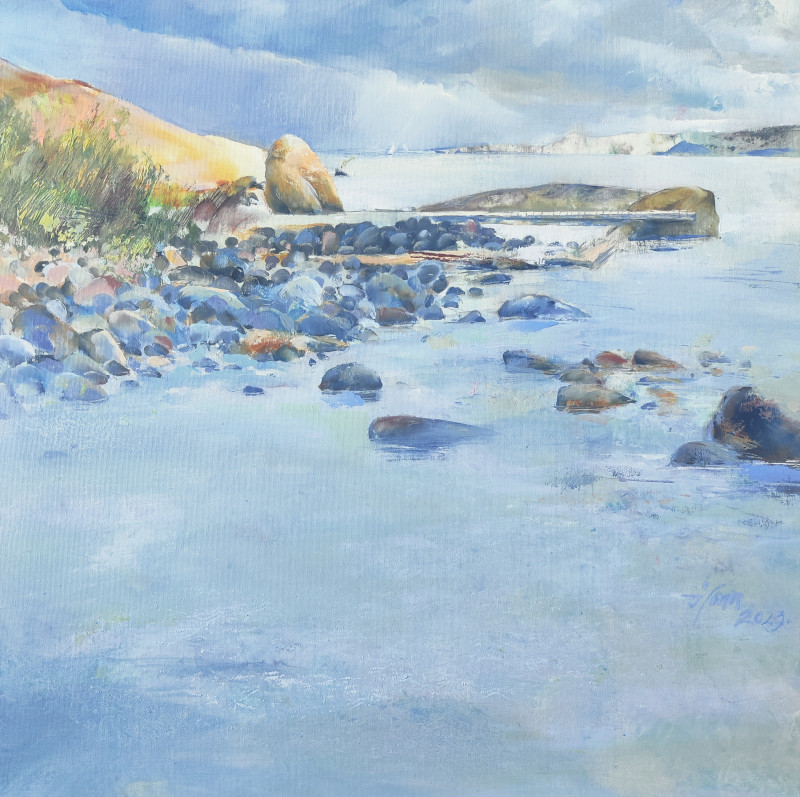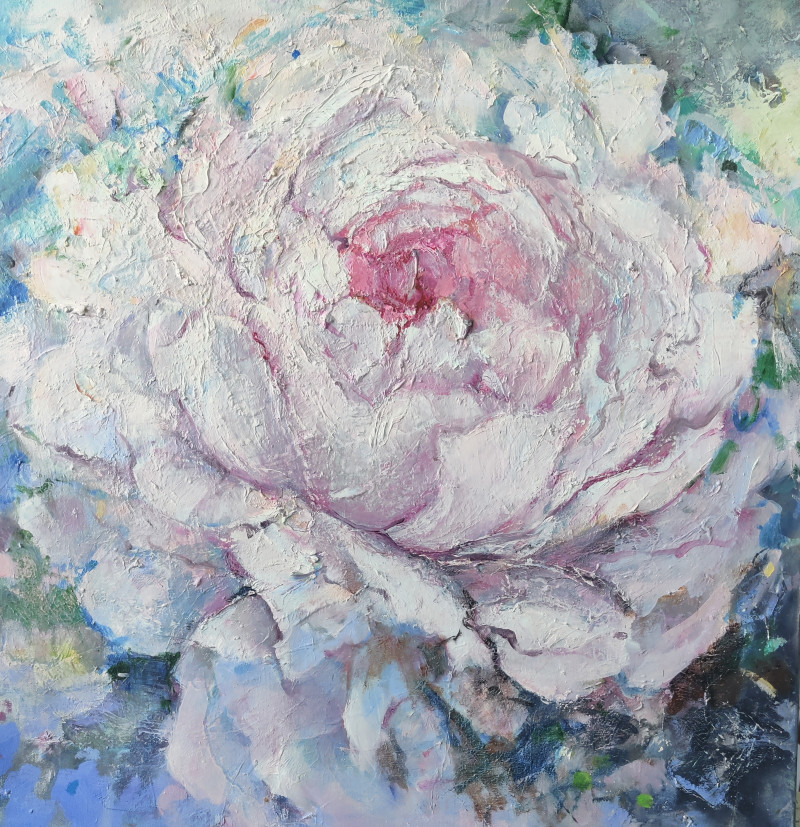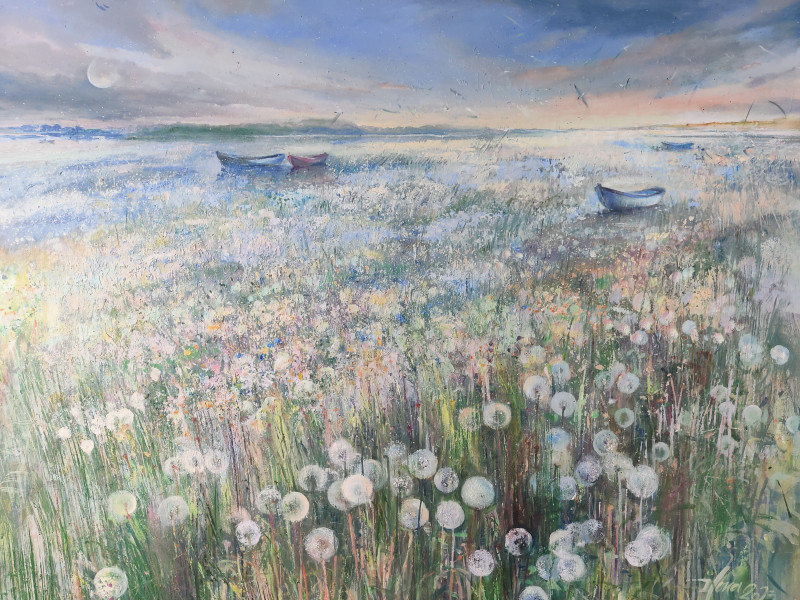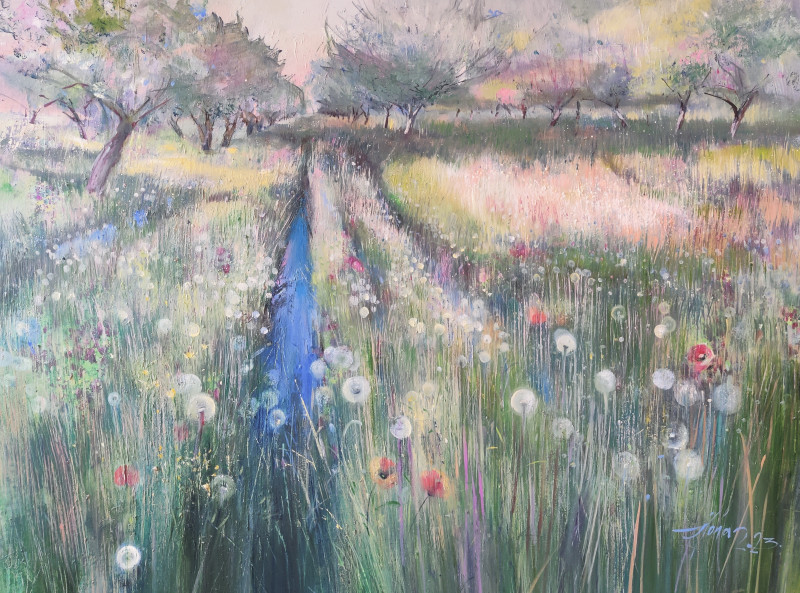Authors Artworks
About the author
Ilona was born in 1961 in Plungė. After graduating from the Faculty of Art at Šiauliai University, she studied the application of art therapy methods at Vilnius Academy of Arts. She has been a member of the Lithuanian Artists' Association since 1999. Ilona has arranged over 30 personal exhibitions in Lithuania, Germany, Norway, and Finland. Her paintings have been successfully exhibited in different art projects, group exhibitions, and plein air paintings in India, France, South Korea, the Netherlands, Latvia, Bulgaria, Armenia, and Belarus. Her works have been bought by private art collectors in Canada, Israel, Australia, the USA, Germany, Finland, Norway, and other countries. In 2018, Ilona founded a self-education club "Auk". She combines creative and project work with teaching as she teaches art at Panevėžys Vytautas Žemkalnis Gymnasium. She is always happy to share her impressions and experience with students and colleagues.
"I spent my childhood in Plungė in a beautiful house with columns built by my father, in a carefully tended environment with flower beds and a lawn. I used to spend time together with my brother Vidmantas and our parents in the incredibly beautiful nature of Žemaitija. The Gondinga mound was and still remains the most beautiful and the most precious place for me, from which you could see the whole world with its secrets and the violets blooming on the slopes. Mykolas Oginskis’ park was my playground, and both the sea and Lake Plateliai were within easy reach of my home. At school, I excelled in all subjects. I chose art studies as if by chance. My dad praised one of my drawings of an ancient sculpture. I think it was just his appreciation that encouraged me to choose a path in art. I graduated from the art faculty at Šiauliai Pedagogical Institute with honors. The supervisor of the diploma thesis, lecturer R. Buivydas, guided me towards choosing pastel and landscape. The appointment to the workplace brought me to Panevėžys. The beginning was exceptionally hard. After the birth of our first daughter, I spent three years of sleepless nights and one-hour bus trips to work in the early mornings. After the lessons and school clubs’ activities, I would travel back home along the pitted road late in the afternoon. We had a furnace for heating our flat, water had to be brought from a well, and the toilet was outside. Therefore, moving into our new home in the city after three long years was a real blessing. I spent every spare minute I had painting because it was a moment of happiness when I was able to observe and convey the fragility of the dandelion I saw, the leaning apple tree silhouette, the bend of the road emerging from the fog. When the borders opened, I was invited to Germany and later to Finland to exhibit my pastels. The works went to a world exhibition in the Netherlands, and later to South Korea. Joining the Lithuanian Artists' Association has opened new opportunities - international plein-air paintings, where artists from all over the world create and socialize. This is an invaluable experience that I am happy to share with my students at Vytautas Žemkalnis Gymnasium. For about 20 years, I have painted only pastels. They have spread worldwide, as if they have flown to private collections in Canada, Israel, the USA, Australia, and Spain, to name but a few. I have not saved all their photos, so you are not going to see most of them in this book, but I am glad they live in people’s homes like small, wonderful moments of my life. Now I use oil and acrylics since it is easier and safer to exhibit and transport the works. The techniques keep changing, and the habit of placing the canvas on the ground, not just on the easel, has remained. I like to kneel to touch the canvas when not only the brushes but also the fingers gently cover the paint. I have been an introvert since childhood. Only in nature did I see the infinite harmony of creation and felt myself like a tiny particle of a perfectly created universe. It took many years for me to open up, and then my life changed. I believe that the whole world, all the people I met with all light or dark colors and shades, reflect me. The people I met and the sights I saw on my trips to India, Rozalimas, Israel, Šventoji, Spain, Italy, Plungė, Turkey, Veisiejai become part of myself, which proves that there are no coincidences and I have everything I need for my journey. While studying art therapy at Vilnius Academy of Arts, I realized far deeper and stronger the importance of nature, art, and the expression of emotions for human health. Recently, there have been numerous discussions about a healthy food culture. Yes, I agree that it is highly important for the body. But it is also of vital importance what image you let into your soul because it remains there for your entire life. A painting can make you happy, calm you down, or encourage you. You need to learn to feel how it affects you. I always feel the responsibility because I know that the emotion a painting arouses not only affects the viewer, the observer, but it goes back to the creator a hundredfold. I like to feel the freedom of choice, to be an artist, a mother, a wife, a teacher, a woman of the world, to look for extraordinary essence in simple motives. Life is so beautiful and precious. I am grateful to Panevėžys and all the smart people I meet on my way; I highly appreciate all of you. Above all, I am deeply indebted to my family for the support, the taste of life, and the possibility to create."
"What is painting for? Why has it existed for many centuries and survived to this day in spite of all the crises and changes? One of the reasons must be the artist's ability to create worlds and to be the Creator. It depends solely on the artist what kind of world it will be, what images he/she will fill the new universe of his/her paintings with. Painting is the convergence of two worlds: the world of images – ideas and the world of matter – paints expressed on canvas. And the viewer becomes a traveller in this universe experiencing the author‘s emotions and being filled with his/her images. Ilona‘s paintings is a journey into the universe of happiness. Looking at them we feel the delight and inspiring lightness of spring, the infinite dreaminess and tranquility of flowering fields, the passion and brightness of summer flowers, the sweet tenderness of a kiss, the meditative thoughtfulness of a chilly forest, the freshness of the lagoon water and the warm golden sun. To express each emotion, the artist selects her own plot as well as motive and embodies them using different techniques from expressive sweeping, bringing the image to the border of abstraction to exquisite calligraphic-linear, as close as possible to reality. The dabs of paint are applied so skillfully that we derive great pleasure from contemplating the world of matter. The variety of techniques and positive emotions demonstrates the painter‘s talent and the highest level of professionalism. The artist Ilona Žvinakienė achieves a rare harmony of content and form. She has the gift of seeing beauty in simple motives of the nature of her native land and conveying the joy of being in its infinite diversity." - Marina Chekmareva PhD, Partner of the Institute for Creative Mind “AMRES ART“, art critic, art historian (The State Hermitage Museum, St. Petersburg)
"Ilona‘s paintings the manifestations of Impressionism are closely intertwined with both Realism and Symbolism. Certain scenes in the foreground seem to be realistic but a more observant viewer will also notice scenes sensitively hidden in them. When you take a closer look at the paintings, trees resemble human figures, their branches look like human hands, hills and mountains hide human faces, and flowers lit up by the sunlight turn into abstract mirages expressed precisely with the help of colours. All this allows the viewer to dive into Ilona's paintings and search for the secrets hidden in them, which the artist conveys with the sensitive touch of a brush. It is this multifaceted and original nature of the author's paintings that makes her stand out from the circle of contemporary Lithuanian painters." - Art critic Evaldas Vilkončius
Lithuanian Artists’ Association Member
